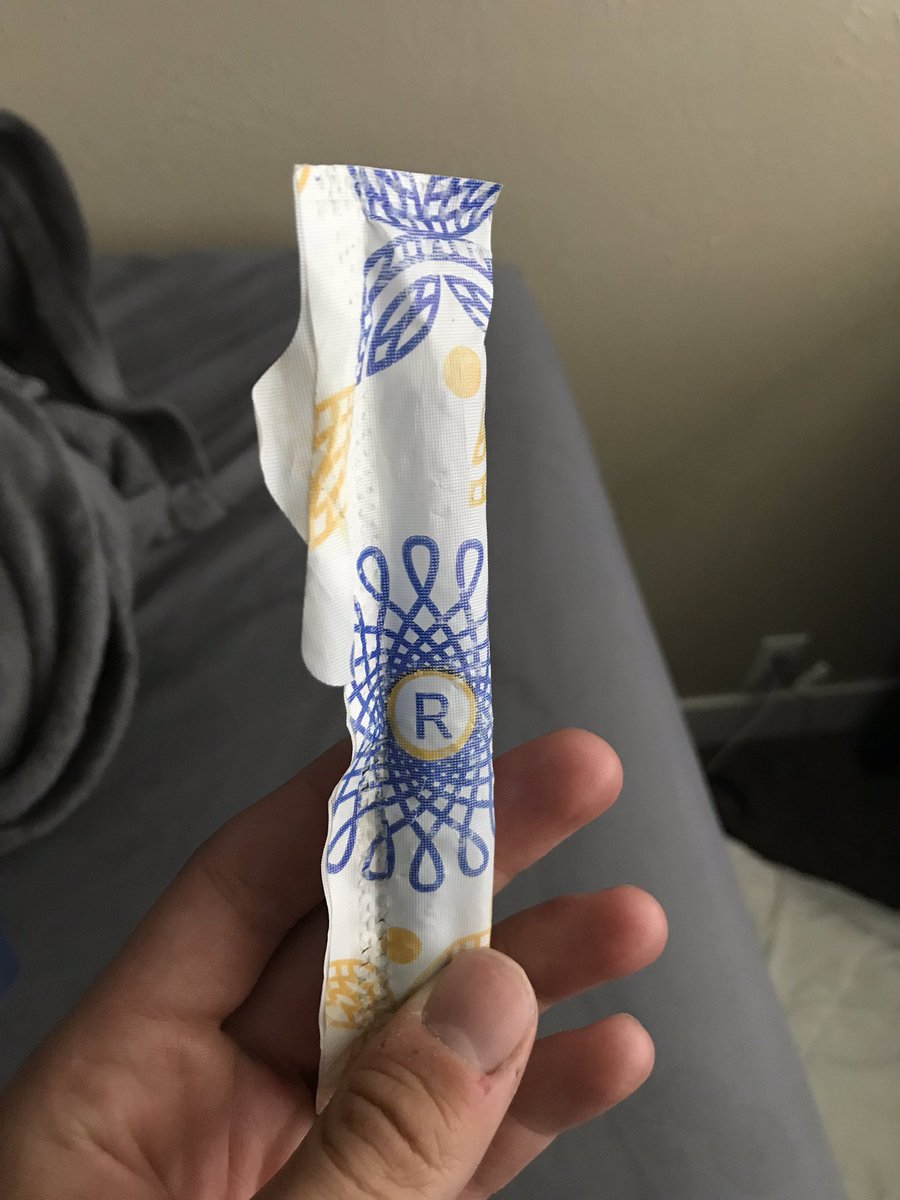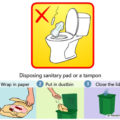
A tampon is a menstrual product designed to absorb blood and vaginal secretions by insertion into the vagina during menstruation. Unlike a pad, it is placed internally, inside of the vaginal canal. Once inserted correctly, a tampon is held in place by the vagina and expands as it soaks up menstrual blood.
FDA-cleared tampons are made of cotton, rayon, or a blend of the two. The absorbent fibers used in FDA-cleared tampons sold today are made with a bleaching process that is free from elemental chlorine, which also prevents products from having dangerous levels of dioxin (a type of pollutant found in the environment).
If you use tampons during your period (or menstruation), it’s important to know how to use them safely. Also share this information with other people who may use these products.
How To Insert A Tampon
Tampons come in different “sizes” (absorbencies), like light, regular, and super. It’s best to use the lowest or lightest absorbency that lasts you a few hours. Some tampons come with applicators — small sticks made of cardboard or plastic that help you put the tampon in your vagina. And some tampons don’t have an applicator, so you just put them in with your finger. Here is how to put in a tampon;
- Wash your hands and get into a comfortable position. You can squat, put one leg up, or sit on the toilet with your knees apart.
- Push the tampon into your vagina using the applicator or your finger, depending on what kind of tampon you have.
- Inserting a tampon in your vagina is more comfortable if you’re relaxed. Using tampons with smooth, rounded applicators may make it easier. You can also put a little bit of lubricant on the tip of the tampon or applicator. If you’re having trouble, ask someone you trust (like your mom, sister, or another person you trust who has used tampons) to show you how to put the tampon into your vagina.
- Throw the wrapper and applicator in the trash — don’t flush them.
- It’s best to change your tampon every 4-8 hours. Don’t leave your tampon in for more than 8 hours. You can wear a tampon overnight, but put it in right before bed and change it as soon as you get up in the morning.
- Tampons have a string at one end that hangs out of your vagina. You take the tampon out by gently pulling the string. It’s easier to take your tampon out when it’s wet from absorbing the max amount of period flow it can.
- Wrap used tampons in toilet paper and throw them away in the trash — don’t flush them.
If a tampon is in your vagina for a long time, it can cause an illness called toxic shock syndrome (TSS). TSS is really rare, but dangerous. If you’re using a tampon and have vomiting, a high fever, diarrhea, muscle aches, a sore throat, dizziness, faintness or weakness, and a sunburn-type rash, take the tampon out and call your doctor right away. To help prevent TSS, use the lowest absorbency tampon you can and change your tampon every 4-8 hours or as often as needed.
Putting in a tampon usually doesn’t hurt, but it may take some practice in the beginning. Try different kinds until you figure out what you like best, but don’t wear tampons unless you’re actually having your period.
If putting in a tampon is very painful, talk with a doctor or nurse about it. You may have a medical condition, or it may be that your hymen is covering the opening to your vagina. Either way, a doctor or nurse can help you figure out why it’s causing pain and figure out what to do about it.
Do tampons hurt?
They shouldn’t! If it hurts when you put a tampon in, you’re probably just nervous, which tightens up your muscles. Take a deep breath and try to relax. We recommend starting out with a plastic applicator tampon for a comfortable, smooth insertion. If you find that it hurts after you’ve inserted a tampon, there’s a good chance it’s because you didn’t insert it far enough. Not to worry. You can either use your finger to push it in further or simply remove it and try again! When your fingers are on the grip of the tampon, they should touch your skin when you’ve got it right and it shouldn’t hurt.
Can a tampon get lost inside me?
There’s no such thing as a lost tampon (unless it’s at the bottom of your bag!). The opening at the other end of your vagina is only the size of a pencil point, which is way too small for a tampon to fit through. If you think you have a stuck tampon, just relax and use your finger to find the string. Don’t worry, it’s impossible to lose a tampon!
What if a tampon gets stuck?
A good tampon can’t really get stuck inside you. If you’re feeling any resistance when you try to remove it, it probably means it’s not time to take it out yet. Wait until the tampon has absorbed more fluid, but never leave it in for longer than eight hours.
What if the string breaks?
Luckily, there’s next to no chance of that ever happening. The removal cord is sewn up into the core of good quality tampons. If it does break, you can use your fingers to reach up and remove the tampon or make an appointment with your doctor.
Can a tampon fall out?
No, when properly inserted, the muscles around the entrance to the vagina will hold the tampon in place so it can’t fall out – so don’t worry! And if you’ve heard that Kegel exercises prevent your tampon from falling out, then please take no notice – this is only a myth.
Do tampons cause yeast infections?
No. When yeast infections happen, it’s usually right before your period begins, so you may mistakenly believe that your tampon is the cause of the yeast infection. But it’s not – yeast infections are caused by a form of yeast commonly found in the vagina known as Candida. The use of antibiotics, among other things, can be a factor in the development of a yeast infection. Read: How to Use Yoghurt Tampons For Yeast Infections
Can tampon components cause an infection?
Yes, many women suffer allergic reaction due to tampons which can sometimes lead to infection. A small number of women are uniquely sensitive to the materials used in making tampons. Contact your health care provider if you have pain, fever or other unusual symptoms. If you have discomfort, pain or other unexpected symptoms like unusual discharge when trying to insert or wear a tampon, or if you have an allergic reaction, stop using tampons and contact your provider.
Can tampons leave fibers inside my body?
Fibers can come off any tampon, but it’s unlikely. It they do, our bodies know what to do – the natural self-cleansing process of the vagina will remove these fibers within a day or two.
Can tampons cause endometriosis or cancer?
No. Tampon use is widely accepted by doctors as a safe form of menstrual protection, and there is absolutely no scientific evidence to suggest that tampons lead to the development of endometriosis or cancer.
Top tips for dealing with your period
Do some light exercise: Low-impact exercises like stretching, yoga, walking or swimming help increase blood flow, which eases cramps. Sitting still can make you feel worse, so it’s important to exercise and get your body moving. Even dancing alone in your room is a great way to lift your spirits and keep you moving!
Hug a hot water bottle: The warmth of a hot water bottle on your tummy is so soothing when cramps are making you miserable. It can soothe your muscles, easing your body’s discomfort and minimizing cramps.
Drink water and stay hydrated: It might seem odd that you need to drink more water when you’re feeling the most bloated, puffy, and full, but the more water you drink, the more easily you will eliminate the water building up in your body. Drink 8-10 250ml glasses of fluid (like water, juice, or milk) throughout the day, making sure to carry a water bottle with you if you’re out and about. This will help you stay hydrated throughout your busy day.
Eat healthy, fresh foods: Try eating more fresh fruit and green veg. You should work towards getting at least five portions of fruits and vegetables in per day. When you eat enough of the right foods, it can make all the difference and can also steer you away from the foods that can make your period symptoms worse (e.g., junk food, chocolate and salty foods). When the cravings hit, try snacking on carrots with hummus, apples with peanut butter, or blend up a smoothie. Another bonus is that fruit and veg contain lots of water, so you’re filling up on the good stuff and staying hydrated at the same time.
Avoid caffeine: Caffeine also makes you retain water and can give you that achy, crampy, bloated feeling, so it’s best to cut it out when you’re on your period. Did you know that caffeine isn’t just found in coffee and tea? It’s also in fizzy drinks and chocolate. Good substitutes are ginger ale (ginger helps to settle your tummy), (iced) herbal tea, or just plain water. If you’re craving chocolate, opt for a small piece of dark chocolate instead of a big chocolate bar.
Catch up on your sleep: You need eight to nine hours of sleep per night, especially when you’re on your period. Getting enough sleep will help to you wake up feeling refreshed and rejuvenated.
Take notes: Being prepared is your best defense when it comes to your period. A great period tip is to record your period each month on a tracker to chart when it starts, how long it lasts, how heavy it is on each day and which side effects you experience before, during and after. After a few months, you’re likely to see a pattern and you’ll find it easier to be prepared.
Use period protection that lets you stay active: Finding the right pantyliners, pads and tampons that provide great protection while meeting your personal needs are an important part of feeling your best. Daily use of pantyliners keep you feeling fresh and prepared before your period, and pads offer great protection during your period – especially now that there are incredibly thin pads made to move with your body. If you’re very active, consider tampons, which are worn internally. Choose the lowest absorbency necessary for your flow and be sure to change it every 4-8 hours. Many women use a combination of products to suit their specific needs, so feel free to experiment to find out what works best for you.
So, now you know our top period tips, your monthly period doesn’t have to hold you back. You can keep on being your fun, energetic self regardless of whether you’re on your period or not.






